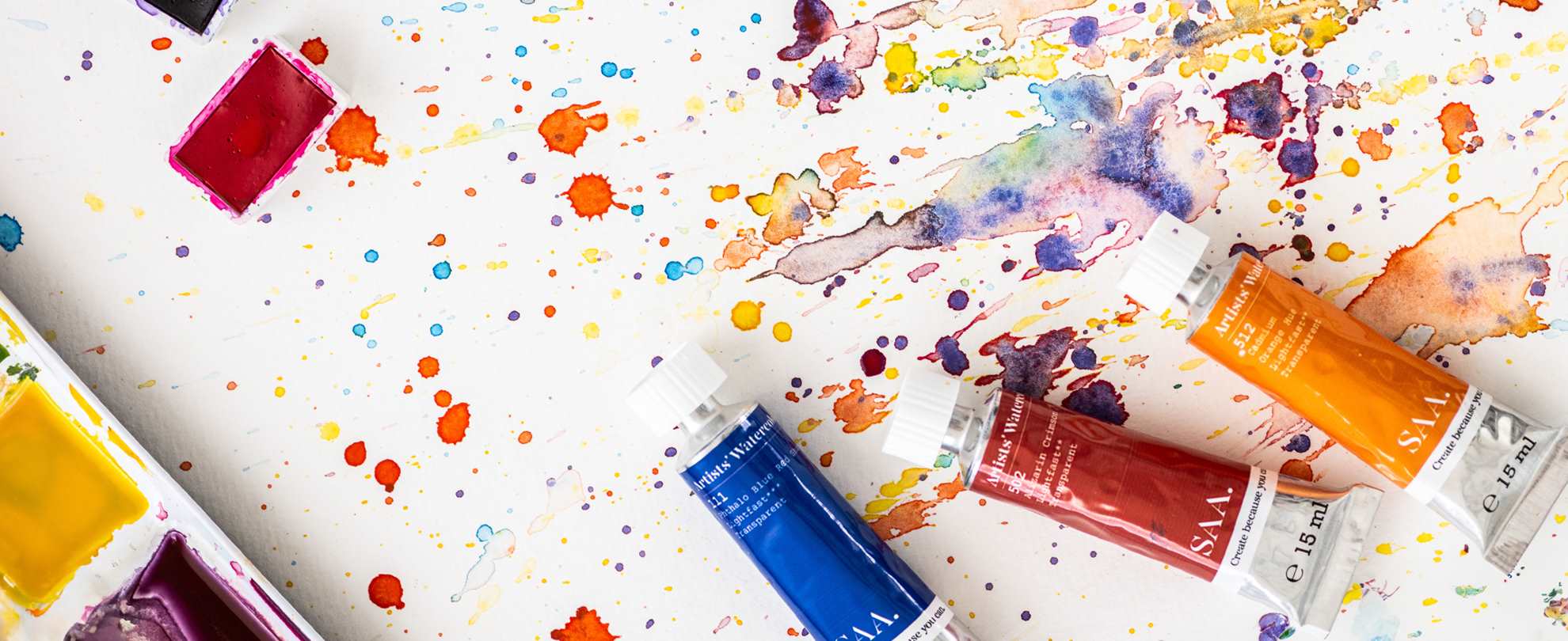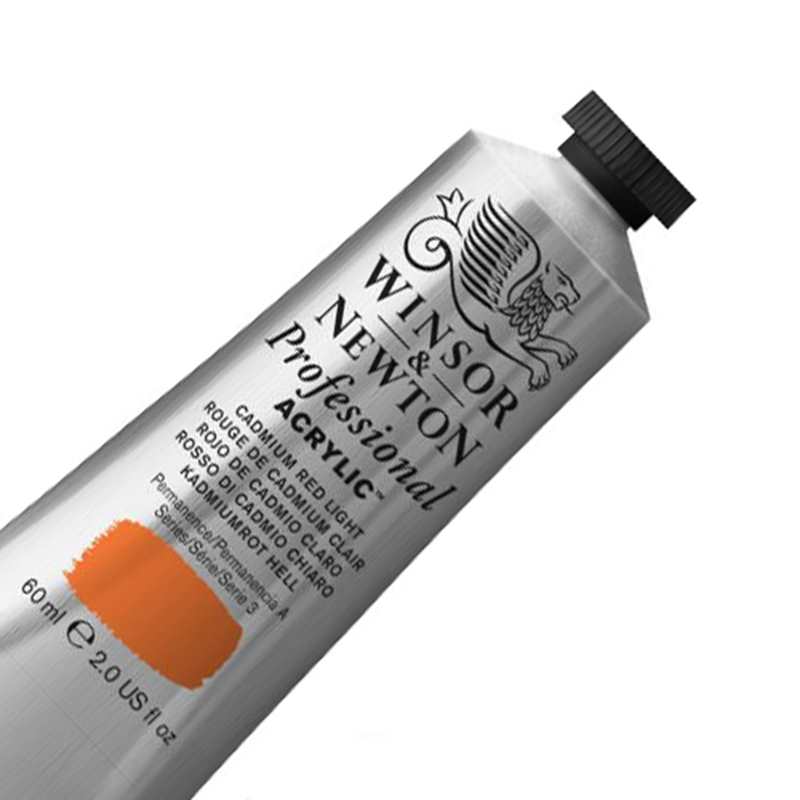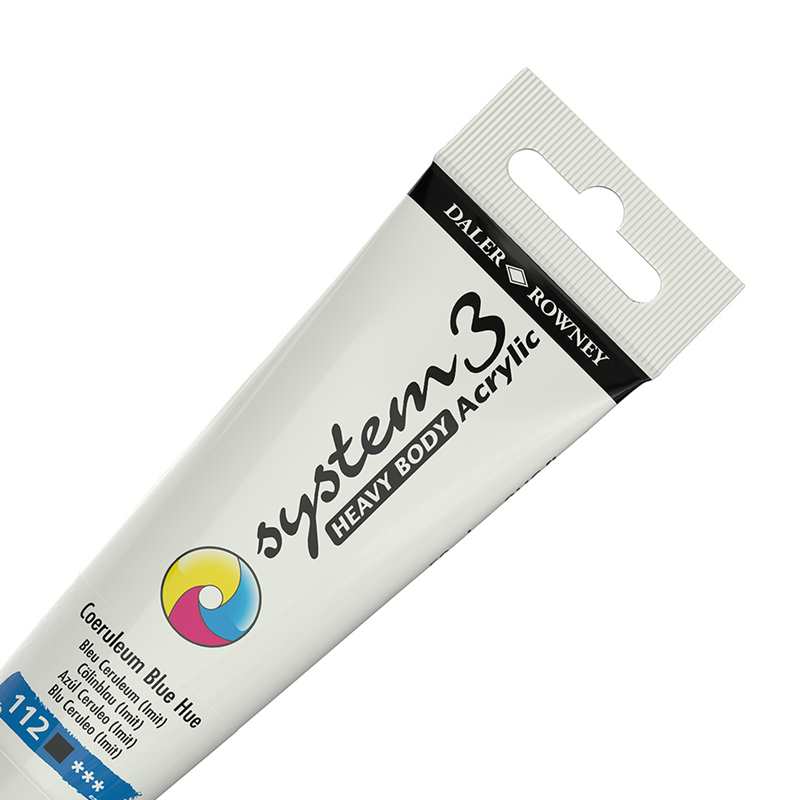

Acrylic painting techniques
Acrylic has many different unique factors that make it a very versatile medium such as you being able to paint light colours over dark, applying it to a variety of surfaces and coming in thick to thin forms (often referred to as heavy body for thick and fluid for thin). You can use acrylic paint in many fun application methods such as putting it into a squeezy bottle and creating raised shapes on top of smooth glass.
Watercolour technique - Use it in a similar way you would use watercolour by diluting acrylic with water. - but unlike watercolour, acrylics are insoluble when dry so the colours cannot be removed once dried. This allows you to lay one colour over another without disturbing another or dissolving the colours underneath.
Oil painting technique - Acrylic paint can be used straight from the tube, diluted with water, or thickened using a suitable medium. Straight from the tube acrylics are opaque – this makes it easy to paint one colour over another.
Impasto – Apply the paint very thickly so the marks of the brush or knife can be clearly seen. If acrylic is drying too quickly an acrylic retarded can be used to reduce the drying times allowing more time for blending and reworking.
Collage - The adhesive properties makes acrylic ideal for mixed media or collage work.
Airbrush technique - Acrylic paint can be sprayed through an airbrush or spray gun – once it dries acrylic paint becomes an insoluble plastic film that is difficult to remove.
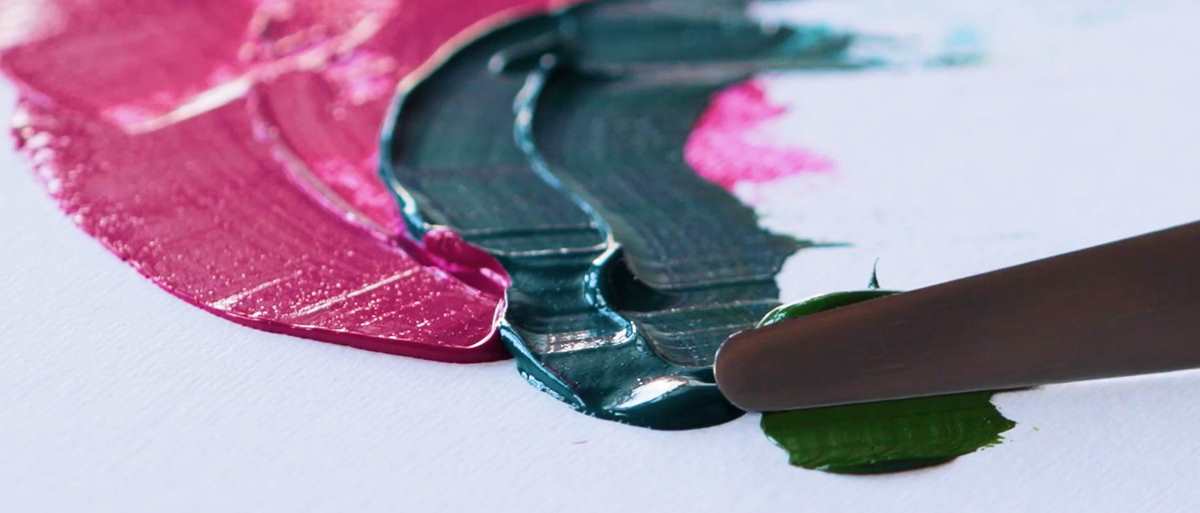

Don't let your acrylics crack
Acrylic is a flexible medium but there are a number of reasons why an acrylic might crack:
- The top layer dries faster than the lower layer especially when you apply the paint thickly or use an acrylic pouring technique. When the top layer dries quickly, the lower layers are sealed off, preventing them from drying as quick this causes the top layer to stretch and crack.
- Acrylic can be used on fabric but if the fabric stretches, the acrylic may crack. This can be prevented by adding a fabric medium, this adds additional flexibility to the paint and ensures the acrylic stretches with the fabric rather than cracking.
- Another common reason for acrylics cracking is Freezing temperatures so, make sure you keep an eye on the environment temperature while you're painting and where you store your paintings.
- Don't use too much water while working with acrylics because it dilutes the adhesive binder of the paint and causes cracking in the heavily applied layers.
- Sometimes when using an acrylic pouring technique, additional ingredients like silicone are added to enhance different effect but sometimes these added ingredients can cause the paint to craze or crack.
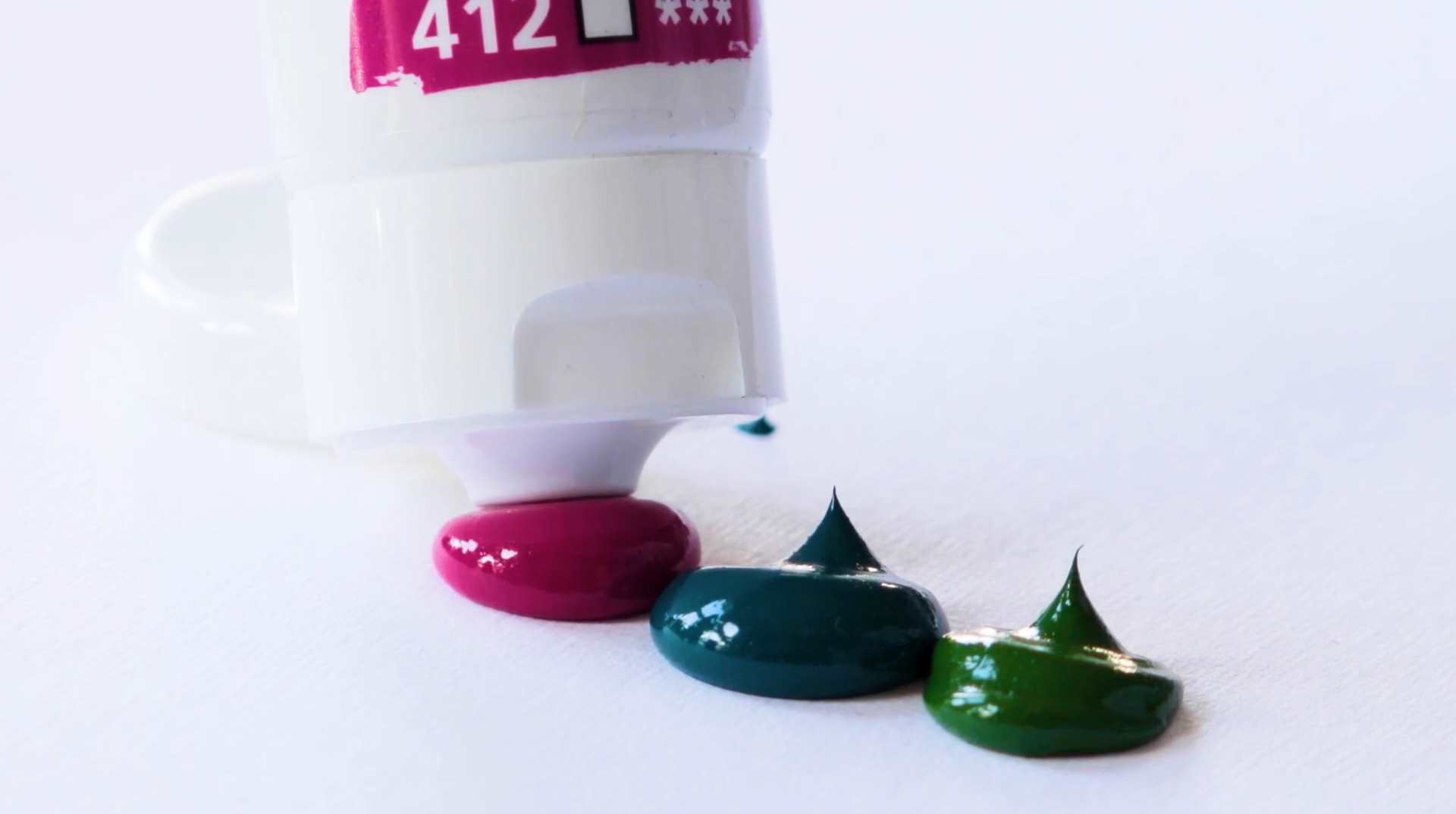

Make your acrylics go further
You can use water to dilute your acrylic paint to add fluidity to them or use them in a similar way you would use watercolour paint. However, too much water can cause overthinning, as the water thins the acrylic colour by diluting the acrylic binder. If too much water is used there will be insufficient binder remaining to bind the pigment. This can lead to a matt or uneven finish will appear on the painting and the work will be susceptible to scuffing and damage.
When it comes to thinning acrylics, it's advised to not mix acrylic paint with more than 50% water. Any more than this can cause the acrylic paint can lose its adhesive qualities and peel off some surfaces or lift when you paint over it. You can mix in as much acrylic medium (glazing, texture paste, etc) as you like because it contains acrylic resin which acts as an adhesive allowing the paint to stick to the surface.


What are the best ways to mix the perfect flesh tones?
Making flesh tones will vary from person to person as there is a vast range of tones and colours in skin tone. You can create a wide variety of skin colours with a few colours and lots of colour mixing such as Red eg. Cadmium red, Yellow eg. Cadmium Yellow, Blue eg. Cobalt Blue, white, Black and Burnt Sienna. A more comprehensive set would include warm and cool colours.
Here are a few colour combination examples...
2 x Reds - eg Cadmium Red (Warm colour) and Alizarin Crimson (Cool colour)
2 x Yellows – eg Cadmium Yellow (Warm colour) and Lemon Yellow (Cool colour)
2 x Blues – eg Cobalt Blue (Warm Colour) and Phthalo Blue (Cool Colour)
White – used to add highlights and mix tones
Black – used to darken colours and add shades
Brown – Burnt Sienna (Warm colour) - a lovely warm brown which can be used on its own for all skin types as well as being a great mixing colour.
Acrylic FAQs
-
Acrylic paints can be used on a variety of surfaces that include canvases, canvas board, paper, boards, wood, watercolour paper, degreased leather even plastic metal, and fabric - any non-greasy or not too glossy surface. Acrylics will not adhere to oily or waxy surfaces. If the surface is too glossy like glass, then the acrylic paint can peel away.
-
Acrylic paint dries fast as it is a water based medium and dries through evaporation. The environmental temperature can also affect the drying time as a warm environment speeds up the drying process whereas a cold environment will slow it down.
In order for a painting to be fully dried and cured you will need to wait about a week or more, depending on the thickness of the paint application. Ensure your painting is completely dry before applying a varnish to help prevent any frosting or the varnish due to a still drying paint layer. A painting may appear touch dry, but this does not mean the layers underneath are fully dry.
-
Acrylic can be used on paper although it's better to use heavyweight paper or board as the acrylic paint will be wet and can cause the paper to cockle.
There are acrylic papers or pads which have been primed to allow for the acrylic paint to adhere to the surface without sinking into the surface.
-
Most acrylics should be compatible with each other as they are all water based. However, the lightfastness, flexibility, yellowing, and UV protecting capabilities may vary from on brand to another, so it is best to test the products with each other before use.
-
You should not be mix acrylic and oil paints together, as oil paints are oil based and acrylics are water based. But Acrylics can be used as an underpainting for oils, but cannot be used over oils. You can use an acrylic primer to prepare the surface for an oil painting but you should not use an oil based primer for Acrylic painting.

